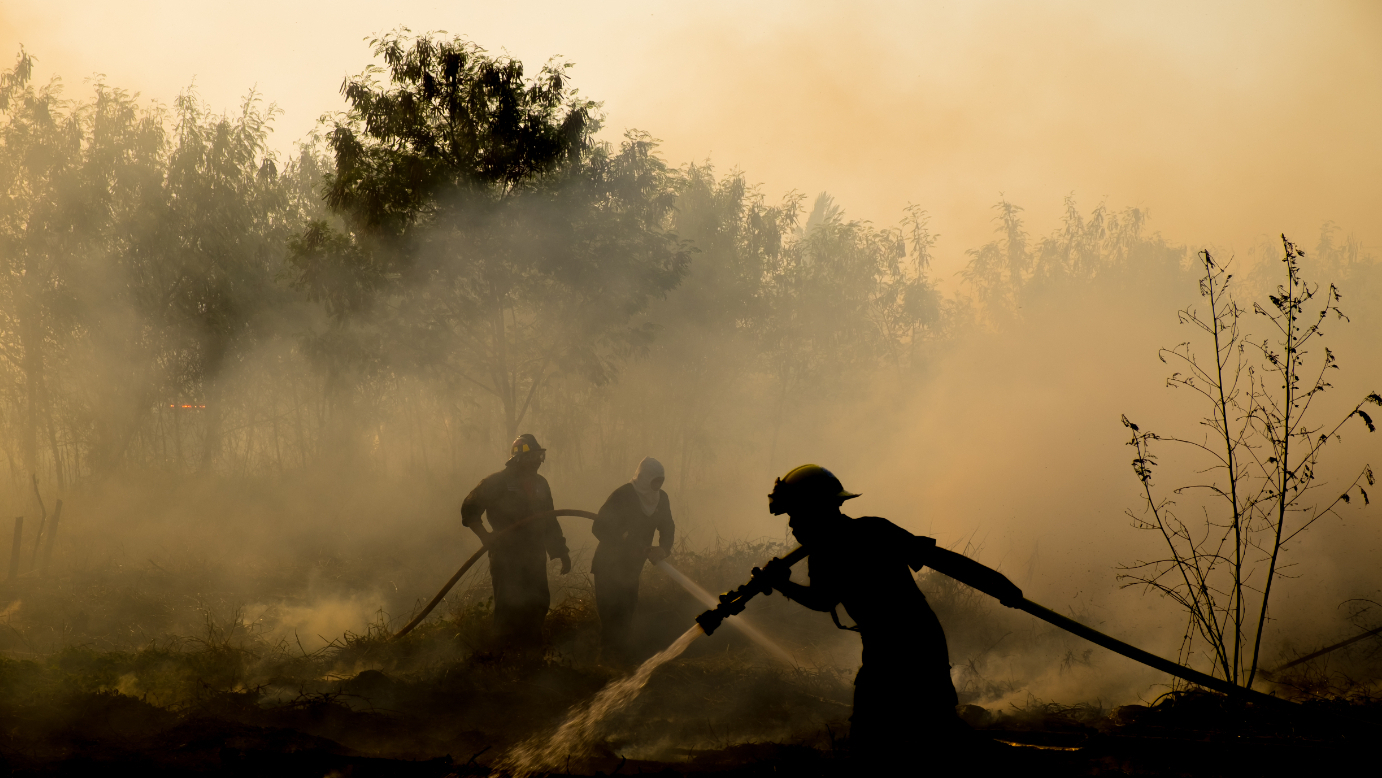
Financing the $30bn adaptation gap
A report from Standard Chartered makes the case for investors to deploy capital in climate adaptation, an investment theme that currently accounts for just 0.4% of surveyed portfolios.
In all likelihood, participants at COP 27 in Egypt heard the phrase “loss and damage” on more occasions than any other. It was one of the legacies of Sharm el-Sheikh. The phrase, after which a fund was later named, throws the spotlight back on a term often lost in the shadows of climate finance: adaptation.
Adaptation refers to the process of protecting people, infrastructure and assets from climate change effects we know will occur. In contrast, much of the climate finance discourse tends to focus on mitigation: reducing emissions, decarbonising production, switching to clean energy and the like.
Not paying enough attention to financing adaptation will have steep costs. This is the message from The Adaptation Economy, a new report from Standard Chartered, a British bank. Researchers behind the report studied ten economies: India, China, Indonesia, UAE, Nigeria, Bangladesh, Egypt, Vietnam, Pakistan and Kenya. All of which are large, populous emerging markets with a relatively high risk exposure to climate change.
Costly inaction
The report estimates the cost of inadequate adaptation in the ten markets at $336bn by 2030. Much of it in the form of damages and foregone output. Put in about $30bn, the report says, and that number starts falling. Which in effect would mean “on average, every dollar spent on adaptation this decade would generate 12-dollars of economic benefit for the ten markets, highlighting the case for early action”
That is quite a jolt to the status quo given that the 150 investors surveyed reported that adaptation finance was an average of just 0.4% of their portfolios. So how do you get to $30bn?
The investment gap
The first part of the puzzle is getting to grips with the gap. The $30bn figure is the estimated adaptation investment gap between now and the end of the decade. It is “the minimum projected level to adapt to climate damages as they occur”.
In terms of geographical spread, about $19.7bn needs to be deployed in India and China. Protecting India’s economy from extreme weather is a need well known: a 2020 cyclone that affected 13m people cost almost $13bn in damages. Extreme weather that hits agricultural supply chains and causes food inflation has been historically disastrous in the subcontinent.
In China, a similar tale unfolded in recent years. In 2021, flooding caused $18.4bn worth of damages. The hydropower cuts from the mainland’s 2022 heat wave resulted in companies closing shop temporarily.
The gap also varies by sector. Agriculture, which is vulnerable to extreme weather, needs $13bn according to the report: “Agriculture is highly sensitive to temperature changes and extreme weather events, so even a limited temperature rise (1.5°C) will have a big impact.” Industry’s share of the pie is about $11.7bn, spread across heating, disaster management infrastructure, air conditioning and transport.
Adaptation without conducive policies and institutional infrastructure is a far shot at best. Which is why bringing in the private sector as a partner rather than a substitute might reap rewards.
Commercial appetite
Having estimated the gap, the report argues, the next step is to gauge whether investors can and should play a role.
Given the nature of adaptation, one would expect the protection of people, infrastructure and assets to fall under the aegis of the state. On paper, a public purse strengthened by political will would be a frontrunner in financing adaptation.
But that theory is marred by the complexity of reality. Adaptation needs tend to be the highest in developing economies where fiscal muscle could be constrained by lower state capacity. And capacity that is a function not only of financial firepower but also technological expertise and institutional strength.
That being said, the public sector is a valuable input to the effort. Adaptation without conducive policies and institutional infrastructure is a far shot at best. Which is why bringing in the private sector as a partner rather than a substitute might reap rewards – a strategy that hinges on the incentives of investment.
The report finds that adaptation is increasingly being seen as a commercial opportunity by the financial markets: “Most firms (68%) believe that adaptation finance and investment is a promising commercial opportunity”. It helps that the evidence on returns from adaptation-based investments is promising. Seventy-four percent of respondents reported an average or above average investment performance over the past year.
Standard Chartered certainly wants to be part of it. Alex Kennedy, head of sustainable finance solutions, outlined the bank’s current adaptation projects as “climate-resilient construction, water reclamation, mangrove conservation, climate-resilient crops and data-driven climate monitoring solutions”
However, commercial appetite needs to be nurtured. The report makes the case for two supplementary components: new financial products and a commitment by governments to public-private partnerships. Converting investor appetite into intent requires the policymaker to create and protect investment incentives.
The report has a rather critical message to investors: all things considered, financing adaptation, is aligned with the interests of a net-zero investor.
It takes the conversation of climate investing much beyond its usual territory of trying to reduce emissions and chase carbon neutrality. Introducing the report at the World Economic Forum in Davos the bank’s chief sustainability officer Marisa Drew said, “the climate change reality is here, it is not going away”.
Adapting to that reality is not just for the state to worry about; investors must too.
Atharva Deshmukh is head of research for Net Zero Investor.




